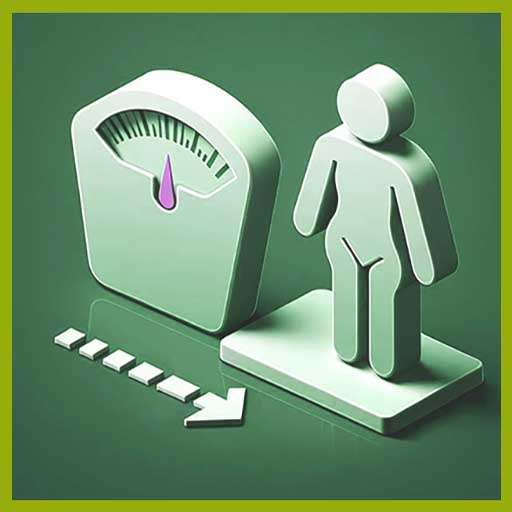In today’s fast-paced society, many of us struggle to find the motivation to exercise. We often make excuses and choose the comfort of our couches over physical activity. However, have you ever wondered why we seem to be inherently lazy when it comes to exercise? This article explores the intriguing concept known as the exercise paradox and delves into the scientific explanations behind our resistance to being active.
The Exercise Paradox: A Clash of Instincts
Our reluctance to exercise can be traced back to our evolutionary instincts. Throughout history, our ancestors had to conserve energy in order to survive. They exerted a great deal of effort in hunting and gathering, which naturally inclined them to rest whenever possible. This inclination to save energy has been passed down through generations, making us predisposed to laziness.
The Brain’s Resistance to Physical Activity
Scientists have discovered that our brains play a significant role in our resistance to exercise. A study conducted by the Brain Behavior Laboratory at the University of British Columbia revealed that our brains respond more strongly to stimuli related to sedentary behavior compared to stimuli associated with physical activity. This suggests that our brains are wired to prefer relaxation over exertion.
Understanding the Neural Basis of the Exercise Paradox
To gain insights into the neural mechanisms responsible for the exercise paradox, researchers have utilized brain imaging techniques. By examining brain activity during tasks that involve avoiding or approaching sedentary behavior, scientists have observed distinct patterns of electrical activity. When individuals consciously resist sedentary behavior, their brains show increased activity as they overcome their natural inclination to be lazy.
The Role of Dopamine and Reward Pathways
One explanation for our resistance to exercise lies in the brain’s reward system. Physical activity triggers the release of dopamine, a neurotransmitter associated with pleasure and reward. However, this reward response is often overshadowed by the immediate gratification of sedentary activities like watching TV or scrolling through social media. Our brains naturally gravitate towards these easily accessible sources of pleasure, making it difficult to prioritize exercise.
Overcoming the Exercise Paradox: Strategies for Motivation
To combat the exercise paradox, it is crucial to find physical activities that genuinely bring us joy. Instead of forcing ourselves to engage in workouts we dislike, we should explore different forms of exercise until we discover something that sparks our interest. Whether it’s dancing, hiking, or playing a team sport, finding an activity aligned with our preferences can transform exercise from a chore into a pleasurable experience.
Embracing Small Steps for Long-Term Success
The common belief of “no pain, no gain” may not be the most effective approach to exercise. Focusing on small and sustainable steps can lead to long-term success. Rather than pushing ourselves to the limit, it’s important to start with achievable goals and gradually increase intensity and duration. By taking consistent, manageable steps towards our fitness goals, we can avoid burnout and maintain a positive relationship with exercise.
Setting Challenges and Tracking Progress
Establishing challenges for ourselves can be a powerful motivator. Setting attainable goals, such as increasing the number of push-ups or running an extra mile, provides a sense of accomplishment and progress. Additionally, tracking our progress allows us to witness tangible results, which can enhance motivation and encourage us to continue pushing ourselves.
Incorporating Physical Activity into Daily Life
Exercise doesn’t have to be confined to dedicated workout sessions. Making small choices throughout the day to be more physically active can accumulate and contribute to a healthier lifestyle. Opting for the stairs instead of the elevator, walking or biking to nearby destinations, or incorporating short stretching breaks during work hours are all simple ways to increase daily activity levels.
Cultivating a Supportive Environment
Surrounding ourselves with like-minded individuals who prioritize physical activity can greatly boost our motivation. Engaging in group workouts, joining sports clubs, or participating in fitness challenges with friends or colleagues can create a supportive and encouraging environment. Sharing successes, challenges, and progress with others fosters a sense of community and accountability, making it easier to stay committed to regular exercise.
Shifting the Culture: Fostering Physical
Education and Awareness
Promoting awareness of the significance of physical activity and its impact on overall well-being is vital in transforming the culture surrounding exercise. Educating individuals from a young age about the advantages of regular physical activity can establish the groundwork for lifelong habits. Including physical education as a mandatory component of school curricula can also instill a positive mindset towards exercise.
Creating Incentives for Physical Activity
To incentivize individuals to prioritize exercise, there must be a change in societal and workplace norms. Offering incentives, such as reduced gym membership fees or rewards for achieving fitness goals, can motivate individuals to integrate physical activity into their daily routines. Employers can also contribute by providing opportunities for active breaks during working hours or organizing company-wide fitness challenges.
Making Exercise Social and Enjoyable
Recognizing the inherent human desire for social interaction, incorporating social elements into physical activity can enhance its enjoyment. Group workouts, dance classes, and recreational sports leagues are all examples of activities that combine exercise with socializing. By emphasizing the social aspect of exercise, individuals are more likely to perceive it as a pleasurable and fulfilling experience.
Conclusion
Comprehending the exercise paradox and the factors behind our reluctance towards physical activity is the initial step in discovering effective motivational strategies. By acknowledging our evolutionary instincts, harnessing the power of our minds, and embracing approaches that align with our personal preferences and lifestyles, we can overcome the exercise paradox and lead healthier, more active lives. Let us embrace the exhilaration of movement and liberate ourselves from the restraints of inertia.





